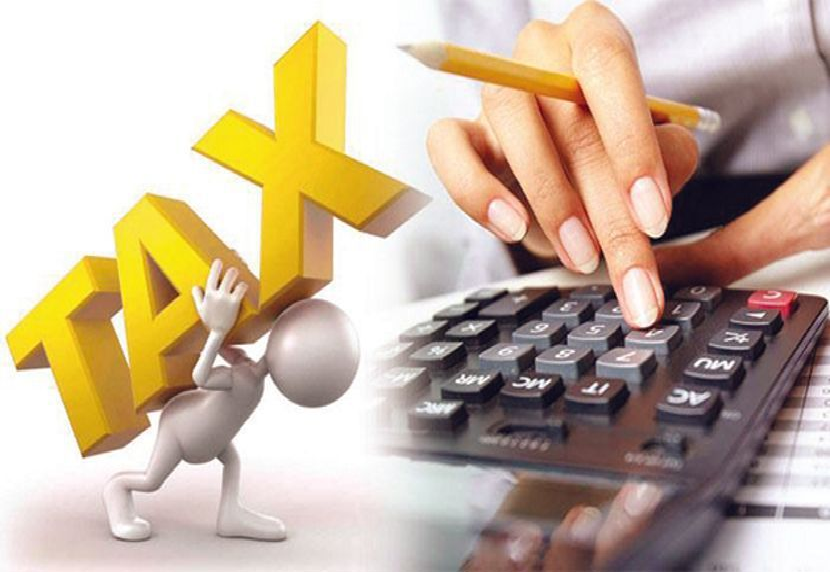
image source ; instagram


The recent Indian government budget has sparked mixed reactions, mostly critical. Although it aims for economic growth through substantial infrastructure funding, critics argue this comes at the expense of crucial sectors like healthcare and education. The healthcare sector, still reeling from the pandemic, received inadequate support, and the education sector saw insufficient funding for digital infrastructure. New taxes, particularly on fuel, are also controversial, as they are expected to raise transportation costs and the prices of essential goods, placing a burden on the common populace during tough economic times.
Increased Deduction on Employer’s Contribution to Pension Scheme
section 80 CCD provides a deduction for the employer’s contribution to the Pension scheme up to 10%. Budget 2024 has now increased the limit deduction limit to 14% of the salary of the employee during the previous year.
STT on Futures and Options
The Security Transaction Tax (STT) on futures has been raised from 0.0125% to 0.02%, and on options, it has increased from 0.0625% to 0.1%.
Other Direct Tax Updates
1.Reopening of Income Tax Returns (ITR): Assessments can only be reopened beyond three years from the end of the assessment year if the escaped income exceeds Rs 50 lakh, with a maximum period of five years. For search cases, the time limit has been reduced from ten years to six years.
2.Income Tax Appeals: To decrease the number of pending cases, the monetary thresholds for filing tax dispute appeals have been increased to Rs.60 lakh for tax tribunals, Rs.1 crore for high courts, and Rs.2 crore for the supreme court.
3.Vivaad se Vishwas Scheme: This scheme has been reintroduced to help settle income tax disputes and reduce litigation.
Differences Between the Old and New Regime
The new budget has introduced several changes compared to the previous regime. One of the most notable differences is the shift in tax structure. The new regime offers a simplified tax filing process with reduced rates but removes most deductions and exemptions. This change is intended to streamline the tax system and make it easier for taxpayers to comply. However, many middle-class families, who rely heavily on these deductions for tax savings, feel that they will end up paying more under the new regime.
Positive Aspects of the New Budget
Despite the criticisms, there are a couple of positive aspects worth noting. Firstly, the focus on infrastructure development is expected to generate employment opportunities. Large infrastructure projects require a substantial workforce, which can help reduce unemployment rates and stimulate economic activity.
Secondly, the government’s push for digitalization is a step in the right direction. By investing in digital infrastructure and promoting digital payments, the budget aims to enhance financial inclusion and make it easier for businesses to operate. This focus on digitalization is expected to improve efficiency and transparency in various sectors of the economy.
Impact on the Middle Class
The middle class, often considered the backbone of the Indian economy, is likely to be significantly affected by the new budget. The removal of tax deductions and exemptions under the new tax regime will lead to higher tax liabilities for many middle-class families. These families, who have been struggling with the rising cost of living, will find it harder to manage their finances.
Additionally, the increase in fuel taxes will have a ripple effect on the cost of essential goods and services. Higher transportation costs will lead to increased prices for daily necessities, putting further strain on the middle class. This, combined with the lack of significant support for healthcare and education, leaves the middle class feeling neglected and overburdened.
People’s Reaction Towards the Budget
The new budget has been met with widespread criticism, with many feeling that the government’s priorities are misplaced and fail to address immediate needs. Social media is rife with negative comments reflecting public dissatisfaction.
Healthcare professionals are notably vocal, arguing that the budget neglects to strengthen healthcare infrastructure despite lessons from the pandemic. Educators and students are also disappointed, citing insufficient investment in digital infrastructure, which exacerbates the urban-rural education gap.
The increase in fuel taxes has sparked significant backlash, with concerns about a rising cost of living and additional financial strain on struggling families. Public sector employees are worried about job security due to disinvestment plans, leading to protests and strikes despite government assurances of economic growth.
Farmers, already protesting for months, feel betrayed by the budget’s lack of substantial support for agriculture, further fueling their demands for more robust support and reforms.
NEW TAX SLABS
| INCOME | TAX RATE |
| UPTO 3 LAKHS | NIL |
| 3-7 LAKHS | 5% |
| 7-10 LAKHS | 10% |
| 10-12 LAKHS | 15% |
| 12-15 LAKHS | 20% |
| 15 LAKHS ABOVE | 30% |
Conclusion
The Government of India’s new economic policy focuses on growth through infrastructure development but is criticized for neglecting health, education, and agriculture. New taxes and asset sales have reduced public support. To regain trust, the government must balance development with public welfare.
Want to know how to save taxes read this : https://textbuffet.com/5-ways-to-escape-imcome-tax-legally/
know more about tax regime : https://en.wikipedia.org/wiki/New_Tax_Regime









kamagra oral jelly: kamagra 100mg prix – kamagra 100mg prix
acheter kamagra site fiable: acheter kamagra site fiable – achat kamagra
Acheter Kamagra site fiable: Kamagra pharmacie en ligne – Kamagra Commander maintenant
Kamagra pharmacie en ligne: kamagra livraison 24h – achat kamagra
pharmacie en ligne livraison europe: pharmacie en ligne – Achat mГ©dicament en ligne fiable pharmafst.com
Tadalafil 20 mg prix sans ordonnance: cialis sans ordonnance – Acheter Cialis 20 mg pas cher tadalmed.shop
buy antibiotics for uti: Biot Pharm – cheapest antibiotics
pharmacy online australia: Licensed online pharmacy AU – Discount pharmacy Australia
online erectile dysfunction prescription: cheap erectile dysfunction pills – Ero Pharm Fast
Ero Pharm Fast Ero Pharm Fast online erectile dysfunction prescription
antibiotic without presription: buy antibiotics online – Over the counter antibiotics pills
buy antibiotics online: antibiotic without presription – Over the counter antibiotics pills
Licensed online pharmacy AU: Pharm Au24 – Online medication store Australia
https://pharmau24.com/# Licensed online pharmacy AU
best online doctor for antibiotics BiotPharm Over the counter antibiotics for infection
Ero Pharm Fast: cheap ed meds – Ero Pharm Fast
get antibiotics without seeing a doctor buy antibiotics online best online doctor for antibiotics
get antibiotics without seeing a doctor: buy antibiotics online uk – cheapest antibiotics
https://biotpharm.shop/# get antibiotics without seeing a doctor
Medications online Australia: Medications online Australia – Buy medicine online Australia
Ero Pharm Fast Ero Pharm Fast best online ed medication
amoxicillin brand – amoxicillin pills purchase amoxicillin pill
mostbet az aviator mostbet az aviator
buy generic fluconazole online – https://gpdifluca.com/# fluconazole cost
1win casino bonus account http://1win3024.com
escitalopram 10mg us – https://escitapro.com/ order escitalopram online cheap
1win airdrop listing date http://1win3027.com/
cenforce 100mg brand – https://cenforcers.com/# order cenforce 100mg online
1win official website 1win3028.com
cialis coupon 2019 – https://ciltadgn.com/# how many 5mg cialis can i take at once
cialis milligrams – https://strongtadafl.com/# when will cialis be generic
hard sale evolution viagra salesman – strong vpls sildenafil oral jelly 100mg kamagra
como usar el bono de casino en 1win como usar el bono de casino en 1win
This is a theme which is virtually to my heart… Diverse thanks! Quite where can I upon the connection details due to the fact that questions? https://buyfastonl.com/furosemide.html
мелбет первая лига мелбет первая лига
The depth in this piece is exceptional. sitio web
melbet как пополнить счет melbet как пополнить счет
Greetings! Jolly useful suggestion within this article! It’s the scarcely changes which choice turn the largest changes. Thanks a portion quest of sharing! https://ursxdol.com/augmentin-amoxiclav-pill/
With thanks. Loads of knowledge! https://prohnrg.com/product/lisinopril-5-mg/
1win պաշտոնական կայք http://1win3073.ru
1win ставки на спорт официальный сайт 1win ставки на спорт официальный сайт
мостбет http://mostbet4084.ru/
mostbet mostbet
More posts like this would force the blogosphere more useful. aranitidine.com
букмекерские конторы бишкек https://mostbet4082.ru/
1вин 1win3062.ru
скачать мелбет казино http://melbet1031.ru
стильные вазоны http://dizaynerskie-kashpo-sochi.ru/ .
Palatable blog you possess here.. It’s hard to on high worth belles-lettres like yours these days. I really recognize individuals like you! Withstand guardianship!! https://ondactone.com/simvastatin/
mostbet vxod http://mostbet4080.ru
стильные цветочные горшки купить стильные цветочные горшки купить .
1win telegram qo‘llab-quvvatlash 1win telegram qo‘llab-quvvatlash
кашпо стильные кашпо стильные .
Greetings! Jolly useful advice within this article! It’s the scarcely changes which liking turn the largest changes. Thanks a portion in the direction of sharing! where to buy dog motilium without a perscription
mel bet сайт https://melbet1040.ru/
цветочные горшки дизайнерские купить цветочные горшки дизайнерские купить .
кашпо оригинальное купить кашпо оригинальное купить .
стильно кашпо купить стильно кашпо купить .
настенное кашпо с автополивом настенное кашпо с автополивом .
стильные кашпо для комнатных цветов http://www.dizaynerskie-kashpo-rnd.ru .
With thanks. Loads of knowledge! http://wightsupport.com/forum/member.php?action=profile&uid=21395
самополивающиеся горшки для цветов купить http://kashpo-s-avtopolivom-kazan.ru/ .
For occasion, if you’re a female beginner, you want to begin with a lower dosage of 5-10mg per day. Oxandrolone, extensively recognized by its model name Anavar, is a well-regarded anabolic steroid that has earned recognition for its ability to help muscle preservation, recovery, and bodily efficiency. Initially developed to assist patients fight muscle-wasting circumstances, Oxandrolone is now used in managed medical contexts to assist people in attaining their health and recovery objectives. Anavar is certainly one of the most powerful and effective anabolic steroids on the market today, and its popularity exhibits no indicators of waning. While it has legitimate medical makes use of, oxandrolone can be commonly abused for its muscle-building effects. Although Anavar bodybuilding properties could also be spectacular, improper use can lead to severe health dangers. Like other drugs, it has trickled down into the recreational world, where it’s usually used to dramatically improve muscle mass or even assist in a fats loss endeavor.
Such successful muscle retention could additionally be attributed to Anavar not aggressively shutting down endogenous testosterone production. Our feminine sufferers have reported feeling depressed and have skilled low libido upon cycle cessation. Dave Crosland, the founding father of Crosland’s Hurt Discount Companies, has additionally found testosterone and estrogen ranges to be poor in females post-Anavar (24). The primary function of post-cycle remedy is to restart endogenous testosterone production.
At a minimal, all male customers might want to stack Anavar with testosterone at a base TRT dosage to keep away from the consequences of low testosterone because of Anavar’s suppressive activity. If Anavar is being used as a half of a longer contest prep cycle, it’ll often be saved for the ultimate weeks of the cycle to get you as lean and shredded as potential. Winstrol is likely to trigger virilization effects in girls, including voice hoarseness30, zits, modifications in menstrual durations, and progress of facial hair.
Liver damage should not be discounted as a attainable facet effect of Anavar, particularly if extreme doses are administered for prolonged durations. Nevertheless, in 1995, Anavar made a comeback, returning to pharmacies beneath the brand name Oxandrin, now produced by BTG (Biotechnology Common Corp.). BTG organized a cope with Searle where they’d proceed manufacturing the steroid but would distribute it exclusively to BTG, thus selling it underneath a new firm name. This is because Anavar is a really potent medicine, and ladies are generally more sensitive to it than males. Your food regimen matters in relation to discovering the proper Anavar dosage for you. Now, these are simply basic recommendations – and as we said earlier than, finding the right Anavar dosage for you might be subjective.
Always inform your doctor about any medications or supplements you are taking to avoid harmful interactions. The finest time to take Anavar depends on your goals and the way your body reacts to the steroid. Many people take Anavar in the morning with meals to assist scale back abdomen upset.
It may or is probably not best for you, and you’ll discover out extra about that in the information below. The only method to safeguard against any risk is to have a prescription for any anabolic steroids taken. Subsequently, if a soldier has low testosterone and is prescribed TRT, if he exams optimistic for testosterone, it will come back as adverse to the commander. Clenbuterol is sometimes referred to as a slicing steroid like Anavar. Nonetheless, clenbuterol just isn’t an anabolic steroid; therefore, we do not see it affecting pure testosterone levels to any important diploma. Due to Anavar’s gentle androgenic score, it doesn’t typically produce virilization unwanted effects in women when taken in low to average doses.
Having a PCT plan ready to go for the top of your Anavar cycle is an easy means of avoiding low testosterone. Anavar has a benefit right here and can also have a more constructive effect on your tendons and joints. Once once more, in case you are sensitive or don’t want to threat it, stick with the beginner plans listed above. This can include disagreeable pumps (like within the lower back) and other points like cramps. Do not share oxandrolone with other people, even when they’ve the same condition as you. Jatenzo is used used to deal with grownup men who have low or no testosterone as a end result of sure medical …
The data introduced on this website isn’t intended to take the place of your private physician’s recommendation and isn’t intended to diagnose, deal with, treatment, or stop any illness. Discuss this info with your personal doctor or healthcare supplier to find out what’s best for you. All information is intended in your general data solely and isn’t an different selection to medical recommendation or treatment for particular medical conditions. The information contained herein is introduced in abstract kind only and supposed to supply broad consumer understanding and knowledge. The info should not be thought-about full and should not be used in place of a visit, telephone or telemedicine name, session or advice of your physician or different healthcare provider.
You’ll be lifting heavier weights and may discover your lifting action improves with that power enhance. If Anavar is the primary steroid you need to use, you’re still nearly actually going to stack it with a minimum of a type of testosterone as a testosterone replacement throughout your cycle. The lack of threat of water retention is a serious benefit of Anavar and a huge cause why it’s such a well-liked and potent chopping compound, together with for aggressive customers. Anavar excels at providing you with vital enhancements in aesthetics – leanness, hardness, dryness, and, briefly, getting ripped and shredded. Anavar will help maintain your performance and energy capacity even on essentially the most limited of calorie-deficit diets. Critically, your results are going to include the preservation of your present lean muscle. Anavar helps forestall you from changing into catabolic – where lean muscle is lost as power.
Clenbuterol’s side effects will almost definitely diminish post-cycle. Anavar’s testosterone-suppressing effects, however, can linger for a quantity of months. However, trenbolone will also trigger deleterious side effects, including excessive elevations in blood strain and significant testosterone suppression. Moreover, trenbolone just isn’t suitable for girls in search of to avoid the event of masculine options. As previously mentioned, Anavar is an costly steroid because of BTG monopolizing the market and driving the price up, costing sufferers $3.75–$30 per day, relying on the dose required.
References:
https://www.valley.md/anavar-dosage-for-men
what to take with dianabol cycle
References:
what to take after Dianabol cycle (https://ecuadorenventa.net/author/oxscarf61/)
dianabol only cycle
References:
http://ask.mallaky.com/?qa=user/rosestew8
горшок для растений с автополивом горшок для растений с автополивом .
CakhiaTV buôn bán ma túy gây nghiện
guía hgh
References:
https://www.easy2france.com/employer/hgh-kaufen-norditropin-simplexx-novo-nordisk-somatropin/
fishing google and scam money users
buy forxiga 10 mg without prescription – dapagliflozin 10mg drug forxiga 10 mg price
fishing google and scam money users
CakhiaTV xâm hại trẻ em
CakhiaTV trang lừa đảo bị công an truy tố
drug trafficking
горшки с автополивом для комнатных растений горшки с автополивом для комнатных растений .
what is the best legal steroid to take
References:
best mass building steroid (https://helx-artifacts-git.apps.renci.org/carmawillilams)
Ma túy giao hàng nhanh
hiếp dâm trẻ em
pedophile sexsual
lừa đảo chính hiệu
buôn bán nội tạng trẻ em
i’m scam money
i’m scam money
buôn bán nội tạng trẻ em
кашпо садовое большое купить кашпо садовое большое купить .
Ma túy giao hàng nhanh
orlistat pills – https://asacostat.com/ buy orlistat 60mg generic
Ma túy giao hàng nhanh
Ma túy bánh
Ma túy đá
Ma túy dạng bột
Ma túy dạng viên nén
Ma túy bột
công an truy quét trang buôn bán ma túy
hiếp dâm trẻ em
Ma túy giao hàng nhanh
Ma túy bánh 5kg
Ma túy đá
Ma túy bột
Ma túy thuốc lắc
большие уличные горшки большие уличные горшки .
Ma túy giao hàng nhanh
hiếp dâm trẻ em
buôn bán nội tạng trẻ em
thao túng lưu lượng truy cập
thao túng liên kết
thao túng thứ hạng google
thao túng google
цветочный горшок высокий напольный купить http://www.kashpo-napolnoe-moskva.ru/ .
горшок напольный горшок напольный .
I couldn’t weather commenting. Adequately written! http://mi.minfish.com/home.php?mod=space&uid=1421092
thao túng lưu lượng truy cập
thao túng google
thao túng thứ hạng
thao túng traffic
xâm hại, ấu dâm trẻ em
buôn bán nội tạng trẻ em
кашпо напольное высокое кашпо напольное высокое .
thao túng lưu lượng truy cập
thao túng google
thao túng traffic
thao túng thứ hạng
thao túng thứ hạng
thao túng traffic
thao túng google
thao túng lưu lượng truy cập
кашпо пластиковое напольное http://www.kashpo-napolnoe-krasnodar.ru .
Ma túy giao hàng nhanh
buôn bán nội tạng trẻ em
xâm hại trẻ em
ipamorelin acetate supplier linkpeptide
References:
ipamorelin injection side effects (http://bioimagingcore.be/q2a/user/camelshirt71)
cjc 1295 ipamorelin cause cancer
References:
https://ninula.com/employer/nashville-cjc1295-ipamorelin-therapy-provider-ipamorelin-doctors-in-nashville/
cjc 1295 ipamorelin dosage per week
References:
https://gitea.offends.cn/martinabaldrid
ipamorelin 5mg reconstitution
References:
https://talentformation.net/employer/cjc-1295-ipamorelin-side-effects-research/
mobiblogtv.love xâm hại trẻ em
mobiblogtv.love xâm hại trẻ em
ipamorelin reddit results
References:
https://sciencebookmark.space/item/337550
mobiblogtv.love xâm hại trẻ em
mobiblogtv.love xâm hại trẻ em
mobiblogtv.love xâm hại trẻ em
mobiblogtv.love xâm hại trẻ em
mobiblogtv.love xâm hại trẻ em
mobiblogtv.love xâm hại trẻ em
mobiblogtv.love xâm hại trẻ em
mobiblogtv.love xâm hại trẻ em
mobiblogtv.love xâm hại trẻ em
ipamorelin dosage for woman
References:
https://ijb.org.in/employer/the-heart-of-the-internet/
mobiblogtv.love xâm hại trẻ em
which is better ipamorelin or tesamorelin
References:
ipamorelin definition nci drug dictionary (https://sound.descreated.com/filomenabedfor)
mobiblogtv.love xâm hại trẻ em
mobiblogtv.love xâm hại trẻ em
mobiblogtv.love xâm hại trẻ em
ipamorelin reconstitution instructions
References:
https://miracleakademi.com/employer/tesamorelin-vs-ipamorelin-peptide-comparison-guide/
does oral ipamorelin work
References:
peptide cjc-1295 ipamorelin (https://es-africa.com/employer/ipamorelin-cjc-1295-before-and-after-results-cycle/)
mobiblogtv.love xâm hại trẻ em
trang hiếp dâm trẻ em
стильные горшки для цветов купить стильные горшки для цветов купить .
trang xôi lạc cướp của giết người
trang cà khịa cướp của giết người
trang cà khịa cướp của giết người
cà khịa xâm hại trẻ em
cà khịa xâm hại trẻ em
mobiblogtv.love xâm hại trẻ em
mobiblogtv.love xâm hại trẻ em
оригинальные цветочные горшки http://dizaynerskie-kashpo-rnd.ru .
кашпо с автополивом для комнатных растений кашпо с автополивом для комнатных растений .
mobiblogtv.love xâm hại trẻ em
hiếp dâm giết trẻ em
hiếp dâm giết trẻ em
hiếp dâm giết trẻ em
hiếp dâm giết trẻ em
hiếp dâm giết trẻ em
cakhia.org hiếp dâm trẻ em
cakhia.org hiếp dâm trẻ em
best testosterone injection for bodybuilding
References:
anabolic drugs (https://guse.in/dacia28119797)
горшок с автополивом большой kashpo-s-avtopolivom-spb.ru .
okwintv.top hiếp dâm trẻ em
super test side effects
References:
https://matchmingle.fun/@deannafellows
кашпо под уличные цветы кашпо под уличные цветы .
as part of the omnibus crime control act of 1990
References:
pro bodybuilding steroid cycles (https://git.traband.ovh/ronnyconway676)
cakhiatv.ch xâm hại trẻ em
mobiblogtv.love xâm hại trẻ em
bmtng.com hiếp dâm trẻ em
okwintv.top xâm hại trẻ em
okwintv.top hiếp dâm trẻ em
Woah! I’m really enjoying the template/theme of this site.
It’s simple, yet effective. A lot of times it’s tough to get that “perfect balance” between user friendliness and visual appearance.
I must say you’ve done a awesome job with this.
Also, the blog loads super quick for me on Safari.
Excellent Blog!
Very quickly this web page will be famous amid all blog visitors, due to it’s
pleasant articles
cakhiatvx.black xâm hại trẻ em
Just How Fast Do Teeth Whitening Gels Work?
Sodium bicarbonate and hydrogen peroxide is a secure and budget-friendly method for minimizing stains. The darkening enamel can after that pull microorganisms into your bloodstream. By organizing your schedule to accommodate the lightening sessions, you can take full advantage of the effectiveness of the therapy and accomplish optimal results. ” The UltraFit tray conforms to any kind of smile, has a minty taste and contains potassium nitrate and fluoride, [which help in] individual convenience,” she says. Some sensitivity is regular nevertheless this can be lowered considerably with the addition of desensitizing agents.
Who Can Use Lightening Gel?
Plus, we assumed it delivered genuine outcomes– our teeth were noticeably whiter after making use of all 14 strips. Whitening items won’t work with veneers and various other types of oral job. If you have these, talk with your dental expert regarding the most effective whitening option for you. Then apply a thin layer of gel to your front teeth, but see to it to prevent your gum tissue line. Some people discover that making use of a check retractor to keep back their lips is handy.
Your hygienist will certainly get rid of tartar from your teeth, which can’t be removed at home. This tartar can otherwise bring about dental caries, periodontal disease, and even painful tooth abscesses. Do not make use of more than once every 3-5 years to lower the capacity for soft tissue damage. Don’t acquire non-prescription gels above 10% concentration to utilize at home. Teeth lightening is not long-term, however with proper upkeep, the results can last for a very long time. For finest outcomes, apply the gel regularly according to the recommended routine in the instructions.
Be cautious of prospective side effects like level of sensitivity, periodontal inflammation, and enamel damage. Understand these risks and take preventative measures for a brighter, certain smile. According to the ADA, peroxide-based lightening agents, such as those used in common tooth bleaching items like strips and gels, can create irritability to the gums. This can happen when the gel is used with an uncomfortable tray or used improperly. When used as directed, teeth lightening products from relied on manufacturers, such as the ones on this listing, are considered secure for teeth and periodontals. This practice might make whitening strips much less risk-free for tooth enamel, and bothersome to gums.
You’ll normally see outcomes of at-home whitening gels within days or weeks. You’ll need to use them much more regularly to maintain illumination and prevent color relapse. On the various other hand, professional bleaching only requires to be retouched every 6 months to a year. The speed of arise from tooth bleaching gels varies based upon the concentration utilized and whether the application is done in your home or properly in a dental workplace. We suggest the Lumineux Pearly whites Lightening Strips if you desire whiter teeth fast. Although they do not consist of peroxide (selecting a mix of natural ingredients), we discovered these strips to be a fast and very easy means to lighten our teeth in simply a couple of d
While many Americans crave toothpaste-commercial-white teeth as long as we do balanced attributes or a thick head of hair, the wish for a brighter smile isn’t just an issue of vanity. Natural teeth-whitening techniques give up the chemical whitening services that in-office, take-home and over-the-counter whitening products rely upon. Rather, customers of natural teeth whitening methods choose to either use the acids in fruits or utilize scrubbing agents such as charcoal or sodium bicarbonate to polish teeth. While there is no over night service for bleaching teeth, there are a number of quick and reliable choices for lightening teeth in your home. Some of the most reliable alternatives include brushing with baking soft drink, oil pulling with coconut oil, and utilizing lightening strips or gels with low concentrations of hydrogen peroxide. A few of the very best all-natural active ingredients for bleaching teeth include baking soft drink, hydrogen peroxide, activated charcoal, coconut oil, and strawberries.
Dentin is a normally yellow, bony cells that exists underneath the enamel (4 ). Advocates of these techniques assert they make teeth considerably whiter, but no research studies have assessed their performance. This likewise suggests that they have actually not been checked for negative effects when made use of on te
Still, she keeps in mind, if the bleach hops on your gum tissues, it will melt the tissue, though it normally heals after a few days. Unfortunately, prominent teeth bleaching procedures, like laser or halogen lightening, are bad for your teeth. And also teeth lightening strips can have effects if not utilized correctly.
These stains can look like your enamel thins with age, enabling the yellowish dentin (hard, internal tissue that makes up the majority of the tooth) to show with. Injuries to your teeth or particular anti-biotics or medications can additionally trigger intrinsic discolorations. Smoking, in particular, is a major factor to tooth discoloration and staining. An older research study discovered a greater prevalence of tooth discoloration in people that smoke tobacco than in those that do
Product kind– Lightening toothpaste does not remove deeply ingrained discolorations. Using customized bleaching trays helps to guarantee your teeth have ideal contact with the teeth whitening representative. Go to SportingSmiles today to purchase your high-quality, inexpensive, tailor-made whitening tray. [newline] In order to lighten your teeth, the whitening representative have to have ideal contact with your teeth. With whitening strips, for example, you are usually not able to achieve full tooth contact and will certainly have locations where the representative does not come into contact with the tooth surface.
The acid in vinegar essentially liquifies tooth framework. Would you wash your cars and truck with acid and expect it to look much better? Bleach doesn’t harm oral work, yet it will not lighten it either.
This seal suggests the product has fulfilled rigorous safety and effectiveness requirements. Keep in mind, an excellent whitening toothpaste must cleanse, safeguard, and brighten your smile without creating harm. In time, the active chemicals in lightening gel break down. Customers may experience enhanced tooth level of sensitivity or gum tissue irritability. In many cases, the break down items can cause discomfort or pain. When teeth whitening gel runs out, its whitening power decrea
What Is Purple Tooth Paste?
Dental caries can damage the interior structures of the tooth, and create popular yellow, brownish, or black discolorations. If your teeth are stained from dental cavity, teeth whitening may not function. In addition, long-lasting use of the broad-spectrum antibiotic tetracycline can also trigger inherent discoloration that teeth lightening is unlikely to solve.
There have also been instances where individuals washing with peroxide created chemical stomach issues and colitis. And it’s a telltale sign that somebody has actually been washing with hydrogen peroxide. Rinsing with hydrogen peroxide or any kind of mouthwash that contains peroxide often can entirely throw off the dental plants inside your mouth. Because of this, the tiny little papilla (finger-like extensions on the surface of your tongue) can expand and come to be elongated, making them appear like hair is growing on your tongue. And if you’re pairing bleaching with various other dental work like veneers or crowns, timing is whatever. We’ll lead you on when to lighten so whatever matches flawlessly.
Microabrasion is a teeth lightening technique in which a dental expert makes use of a device to remove an exceptionally thin layer of enamel to disclose a whiter layer underneath. This approach is effective for getting rid of certain kinds of surface discolorations, consisting of tooth discoloration from too much fluoride direct exposure throughout tooth development. Home teeth bleaching kits can be made use of on all teeth types, while some bleaching toothpaste may not appropriate for delicate teeth or certain dental job. White in Minutes ® home teeth lightening kits can be found in different gel toughness to your your sensitivity degree and preferred results. Each package includes lightening trays that are made to fit your teeth flawlessly, guaranteeing that the gel is uniformly distributed and that every tooth is covered. The mix of LED and warmth makes the active ingredient job much better and quicker, with a lower concentration.
We take pride in tailoring each treatment. to our consumer’s demands. Before starting, we evaluate tooth sensitivity and change the gel strength accordingly. Regarding 90% of our clients report little to no discomfort during or after the treatment. For those with sensitive teeth, we offer special desensitizing items to use in the past and after therapy. At Wellaholic, we believe everyone should have an amazing smile without breaking the bank.
Relying on your starting color, you may need greater than one session. But also one browse through provides recognizable outcomes for many people. Searching for oral workplace offering teeth whitening near you? Many in-office treatments can make teeth several tones whiter in simply one session, normally lasting about an hour. Store-bought packages, on the various other hand, call for weeks of regular usage to achieve also minor renovati
Customers might not attain the intense smile they desire. They might use more gel, hoping for better results. This can lead to overuse, causing damage to their teeth and gum tissues. At Smile Design Dentistry, we prioritize risk-free, reliable bleaching alternatives based on clinical evidence. Gargling with hydrogen peroxide will just allow the liquid to invest even more time against your soft cells and the back of your throat.
Typical Teeth Bleaching Therapies
From your very first consultation to the minute you check your representation post-treatment, every step issues. If you have actually had sensitivity concerns in the past, allow us recognize during your examination. Likewise, your teeth may really feel a little bit dry or milky initially. Since your teeth are gleaming, you’ll wish to maintain them in this
amazon bigger leaner stronger
References:
https://intensedebate.com/people/lightmother60
core-services.io hiếp dâm trẻ em
lạm dụng tình dục trẻ vị thành niên
blorbcoin.io hiếp dâm trẻ em
putumayo-home.com hiếp dâm trẻ em
blorbcoin.io ấu dâm
are anabolic steroids illegal in the us
References:
https://badcase.org/zygg/members/looksudan9/activity/1200252/
some studies have found a reduced risk for acne among people consuming
References:
https://hedgedoc.digillab.uni-augsburg.de/cEGZGCuhQTycxFhiirmGHQ/
winterparkicerinksf.com xâm hại trẻ em
radiaid.com hiếp dâm trẻ em
ffccsd.org xâm hại trẻ em
You can conserve yourself and your stock by being cautious when buying pharmaceutical online. Some druggist’s websites operate legally and put forward convenience, solitariness, rate savings and safeguards over the extent of purchasing medicines. buy in TerbinaPharmacy https://terbinafines.com/product/kamagra.html kamagra
nttmuseum.org lạm dụng trẻ em
novelpenai.com lạm dụng trẻ em
This is the gentle of scribble literary works I positively appreciate. mot de passe filden.com
cakhiatv.org.uk xâm hại trẻ em
novelpenai.com lạm dụng trẻ em
lupinworks.com lạm dụng trẻ em
manto7store.com lạm dụng trẻ em
newstud.io lạm dụng trẻ em
newstud.io hiếp dâm trẻ em
newstud.io xâm hại trẻ em
This is the kind of serenity I take advantage of reading.
roamdigital.com xâm hại trẻ em
histmodbiomed.org xâm hại trẻ em
unisaber.com.co xâm hại trẻ em
xoilactv.tech hiếp dâm trẻ em
bugstrike.io xâm hại trẻ em
hanumankorea.com xâm hại trẻ em
xoilactv2.com xâm hại trẻ em
softgearinfotech.com hiếp dâm trẻ em
leggy.io xâm hại trẻ em
novelpenai.com best sextoy for child
giantbirdsnest.com best sextoy for child
giantbirdsnest.com hiếp dâm trẻ em
diewerkstatt.io lạm dụng tình dục trẻ em
diewerkstatt.io best sextoy for child
pornhub giantbirdsnest.com
pornhub cinema-ginsei.com
cinema-ginsei.com hiếp dâm trẻ em
dryadesballroom.com hiếp dâm trẻ em
dryadesballroom.com pornhub sex child
diewerkstatt.io pornhub sex child
cinema-ginsei.com scam everything
unisaber best sex toy for child
odishaexam.in best sex toy for child
odishaexam.in hiếp dâm trẻ em